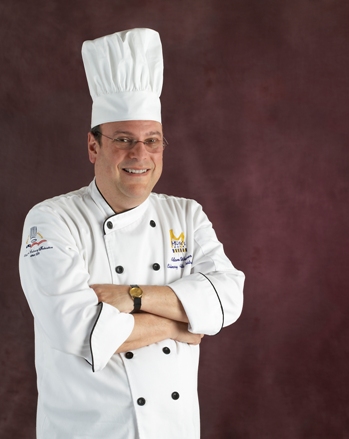50-Minute Classroom: 10 Key Points of Separation
02 June 2010By Adam Weiner
 Says Chef Weiner, with summer here, it’s time to look at your curriculum, look at your syllabus, look at your lesson plans, and see what you can do to make sure you teach the basics your students need to get and keep a job.
Says Chef Weiner, with summer here, it’s time to look at your curriculum, look at your syllabus, look at your lesson plans, and see what you can do to make sure you teach the basics your students need to get and keep a job.
My program runs year 'round. I have new students starting and senior students graduating every month. I envy my friends whose classes have summer breaks. It would be great to have some off time to review what happened in the previous class term: what went well, and what needed improvement. I would then take these points and modify my course curriculum, changing what didn’t work, and strengthen what did.
All of my friends who teach culinary have told me that, over the years, they have cut back on their curricula, with more emphasis on the 10 key points that separate an amateur from a cooking professional:
- Planning
- Preparation (mise en place including knife skills)
- Presentation
- Passion for what you do
- Pride in everything you do
- Being early to work every day, and being there every day
- Doing what the chef says, not what you think the chef wants
- A “Yes Chef” attitude
- Always watching food costs
- Food safety and sanitation
The first five are what I refer to as the five Ps of Professional Cooking, and I have previously written for “The Gold Medal Classroom” about presentation (Jan-Feb 2009), planning (January 2010) and preparation (March 2010). The last five round out the list. The more I teach the more I realize that everything young culinarians need to know fits fairly neatly into one of those 10 categories. (Cooking with pride and passion alone cover all cooking techniques.)
My point in all of this is that sometimes we, as culinary instructors, get hung up on teaching specific cuisines, recipes and dishes instead of teaching the basic things that students will need to get and keep a job. We forget that our task is not to produce culinary prima donnas; our duty is to teach our students how to be good worker bees so that someday they may rise to the top after years of hands-on experience. Our course outlines and lesson plans need to focus on teaching our students the skills to make it in a commercial kitchen long enough to move up the ladder. We aren’t producing sous chefs, chefs or executive chefs. We are producing dish washers, prep cooks and low-level line cooks, who will hopefully rise to become sous chefs, chefs and executive chefs.
Every month I read a number of different trade publications, and almost all of them contain a few quotes from chefs or managers saying something to the effect that they look to hire people with a good attitude and they will teach them the skills needed for the job. Yet, we as instructors often forget to teach students the right work ethic, the right attitude.
With summer here it is time to look at your curriculum, look at your syllabus, look at your lesson plans, and see what you can do to make sure that you teach the basics your students need to get and keep a job. Don’t worry: With these skills, your good students will eventually rise to the top.
A teaser: Next article will be on how to teach braising in 50 minutes.
Chef Adam Weiner teaches a 20-week Introduction to Cooking program for JobTrain and the Sequoia Adult School on the San Francisco Peninsula.
